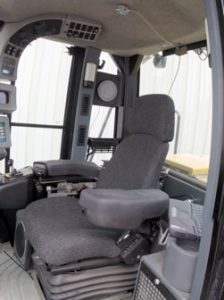
BYU professors’ research has led to many new technologies and inventions including more than 19 startup businesses throughout the country in the past year, according to the Technology Transfer office director Mike Alder.
The Technology Transfer office is tucked away on the third floor of the Harold B. Lee Library. It stays busy with 65 to 100 unique inventions each year from professors all over campus, Alder said.
“I would say that about 10 percent of those (inventions) are world class,” Alder said. “They really are incredible opportunities for helping mankind with new cures for disease, new products (and) new software that solves problems.”
Alder said an incredible variety of inventions come through the office, including unmanned vehicles, an ingredient for anti-aging cream and a bullet proof origami-inspired shield built to protect law enforcement.

Physics and astronomy professor Scott Sommerfeldt recently developed active noise control technology to control sound in vehicles. Sommerfeldt said this is only one of six patented inventions he has sent through the Technology Transfer office.
“When we do research, if we think we have an idea that seems innovative and unique, then we meet with Tech Transfer, and if they agree we do an invention disclosure, which gets initial protection on it, they start looking at the marketplace to see if it looks like it has potential,” Sommerfeldt said. “If everyone agrees that it has potential — it’s patentable — then we go ahead and file a patent.”
Company CEO and BYU alumnus Henk Brenkman licensed Sommerfeldt’s active noise control technology through the Technology Transfer office and is now overseeing its further development. Brenkman said the office took him through many steps before he could get the license.
“The process involved getting to understand the technology by meeting with the inventors, witnessing a demonstration and then doing market validation to see what we (wanted) to do with the technology,” Brenkman said.
Sommerfeldt said he recognizes challenges selling these licensed technologies to businesses.
“We tend to be a little bit more at the basic front end of research. So we get some nifty ideas that are really good technology, and we can only get to a certain point,” Sommerfeldt said. “Ideally, what companies would like would be to receive the technology at a point that is further along. So there is sort of this gulf between where the university will typically get it to and where the company would really like to receive it from.”
BYU neuroscience alumnus and Vykon Technologies CEO Nathan Stanford said the Technology Transfer office has supported him in taking a technology he initially worked on with professor Steven Charles and supported him in developing a business plan for the software that is now called DextraSense. Stanford said the software tracks tremors and observes progress of Parkinson’s disease patients.
“The entire Tech Transfer department has always been flexible with us and given us fair deals that pushed us, and at the same time allowed us the freedom to make DextraSense into the success we knew it would be,” Stanford said. “They took a chance with us as maybe overly ambitious — and at times, somewhat naive — students and gave us the tools we needed to be successful.”
Alder said the Technology Transfer office is there for professors’ inventions, but every single one of the technologies that comes through the office is enterprise worthy and can be used by students to start their own companies.




